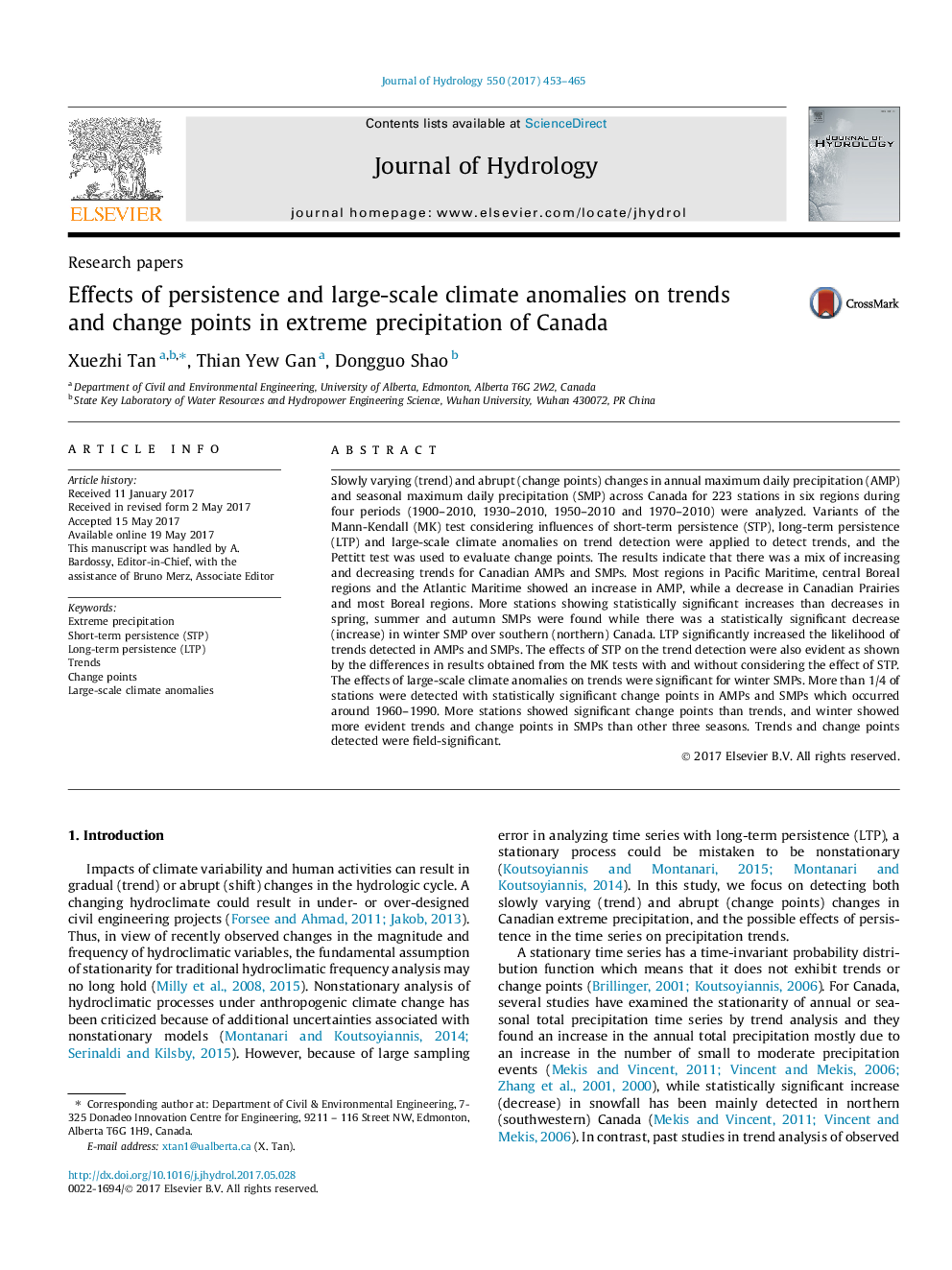| Article ID | Journal | Published Year | Pages | File Type |
|---|---|---|---|---|
| 5770769 | Journal of Hydrology | 2017 | 13 Pages |
Abstract
Slowly varying (trend) and abrupt (change points) changes in annual maximum daily precipitation (AMP) and seasonal maximum daily precipitation (SMP) across Canada for 223 stations in six regions during four periods (1900-2010, 1930-2010, 1950-2010 and 1970-2010) were analyzed. Variants of the Mann-Kendall (MK) test considering influences of short-term persistence (STP), long-term persistence (LTP) and large-scale climate anomalies on trend detection were applied to detect trends, and the Pettitt test was used to evaluate change points. The results indicate that there was a mix of increasing and decreasing trends for Canadian AMPs and SMPs. Most regions in Pacific Maritime, central Boreal regions and the Atlantic Maritime showed an increase in AMP, while a decrease in Canadian Prairies and most Boreal regions. More stations showing statistically significant increases than decreases in spring, summer and autumn SMPs were found while there was a statistically significant decrease (increase) in winter SMP over southern (northern) Canada. LTP significantly increased the likelihood of trends detected in AMPs and SMPs. The effects of STP on the trend detection were also evident as shown by the differences in results obtained from the MK tests with and without considering the effect of STP. The effects of large-scale climate anomalies on trends were significant for winter SMPs. More than 1/4 of stations were detected with statistically significant change points in AMPs and SMPs which occurred around 1960-1990. More stations showed significant change points than trends, and winter showed more evident trends and change points in SMPs than other three seasons. Trends and change points detected were field-significant.
Related Topics
Physical Sciences and Engineering
Earth and Planetary Sciences
Earth-Surface Processes
Authors
Xuezhi Tan, Thian Yew Gan, Dongguo Shao,
